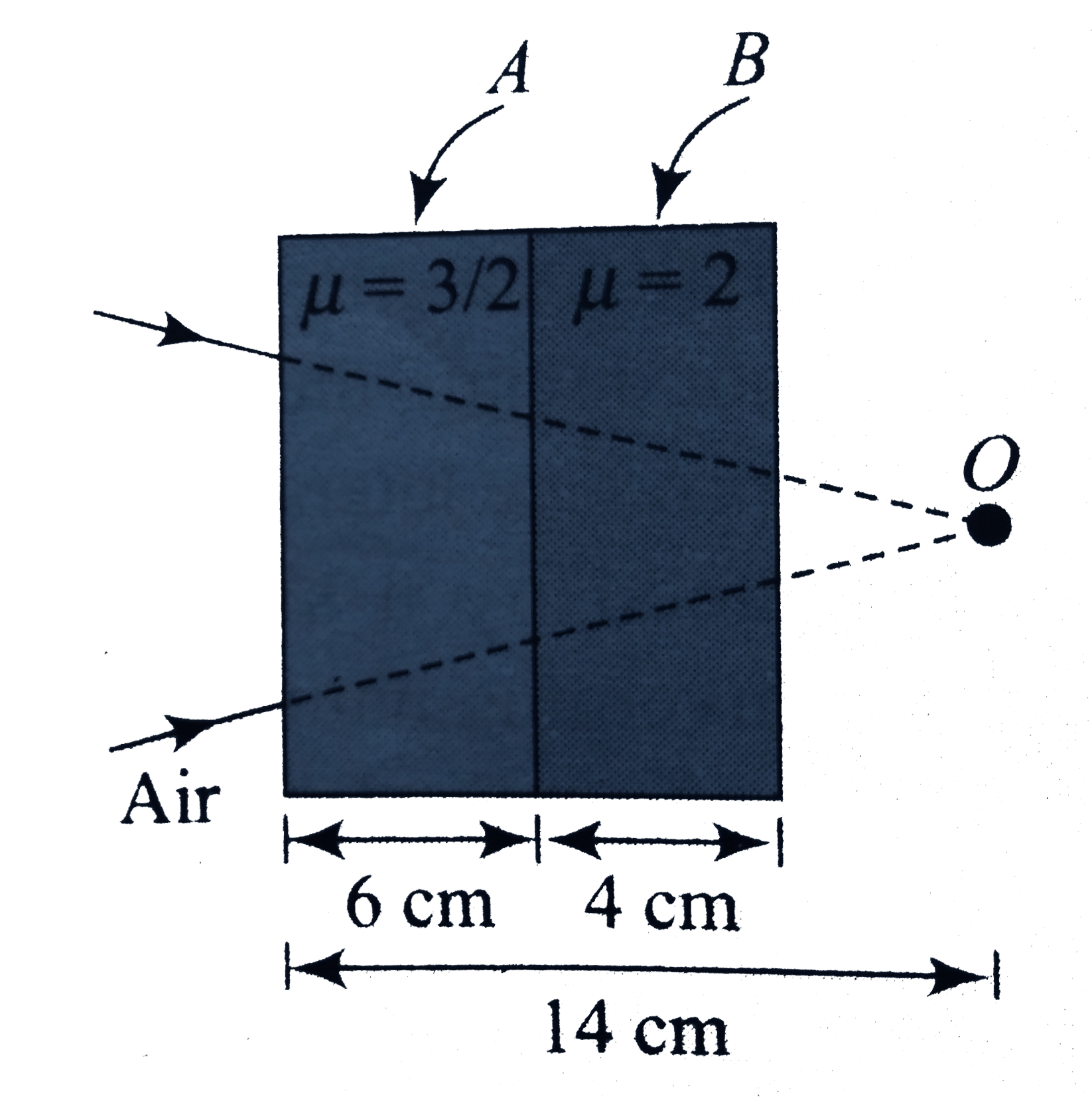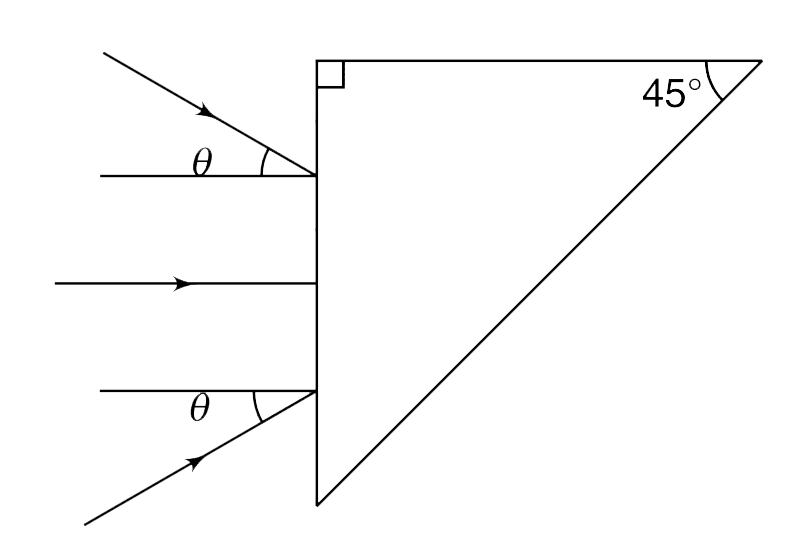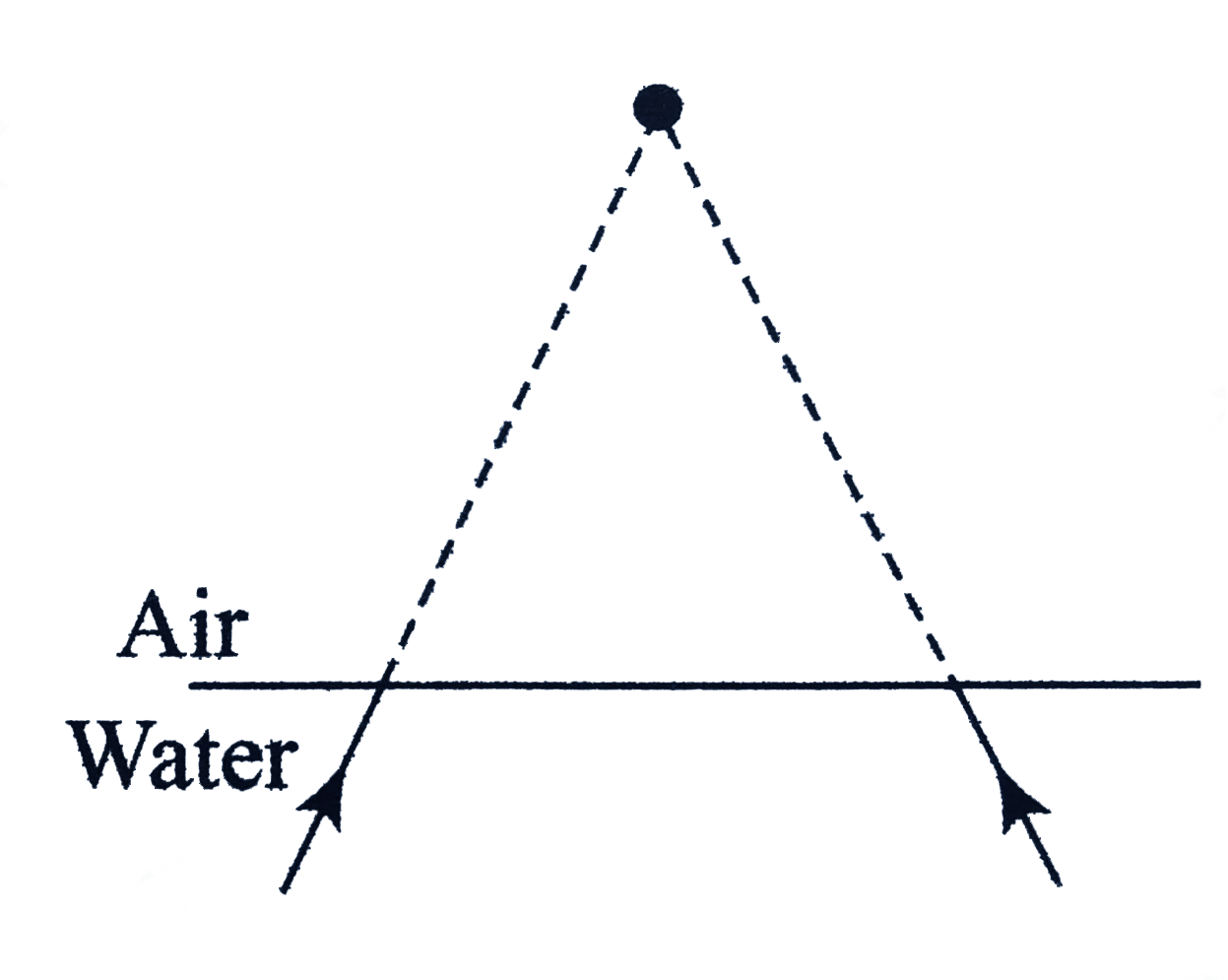A converging beam of light rays incident on a glasa-air interface as shown in figure. Find where these rays will meet after refraction.

Step by step video & image solution for A converging beam of light rays incident on a glasa-air interface as shown in figure. Find where these rays will meet after refraction. by Physics experts to help you in doubts & scoring excellent marks in Class 12 exams.
Updated on:21/07/2023Topper's Solved these Questions
- GEOMETRICAL OPTICSBook:PHYSICS GALAXY - ASHISH ARORAChapter:GEOMETRICAL OPTICSExercise:Practive Exercise 5.1
Explore 10 Videos
- GEOMETRICAL OPTICSBook:PHYSICS GALAXY - ASHISH ARORAChapter:GEOMETRICAL OPTICSExercise:Practive Exercise 5.2
Explore 6 Videos
- ELECTROSTATICSBook:PHYSICS GALAXY - ASHISH ARORAChapter:ELECTROSTATICSExercise:Unsolved Numberical Problems
Explore 73 Videos
- HEAT AND THERMAL EXPANSIONBook:PHYSICS GALAXY - ASHISH ARORAChapter:HEAT AND THERMAL EXPANSIONExercise:UNSOLVED NUMRICAL PROBLEMS FOR PREPARATION OF NSEP, INPhO & IPhO
Explore 82 Videos
Similar Questions
A convergent beam is incident on two slabs placed in contact as shown in figure. Where will the rays finally converge?

View SolutionA converging beam of light is incident on a right angled isosceles prism as shown in the Figure. The marginal rays in the beam are incident at angle ±θ. The refractive index for the glass of the prism is μ=1.49(=1sin42°) . Find the maximum value of θ for which no light comes out of the hypotenuse surface.

View Solution
Knowledge Check
STATEMENT -1: A white parallel beam of light is incident on a plane glass-vacuum interface as shown. The beam my not undergo dispesion after suffering deviation at the interface (The beam is not incident normally on the interface.)

STATEMENT -2: Vacuum has same refractive index for all colours of white light.AStatement-1 is True, Statement-2 is True, Statement-2 is a correct explanation for Statement -1BStatement-1 is True, Statement-2 is True, Statement-2 is NOT a correct explanation for Statement -1CStatement-1 is True, Statement-2 is FalseDStatement-1 is False, Statement-2 is trueThere is a equilateral prism of refractive index 3 on which a light ray is incident normally on one face as shown in the figure. Find the length of the path traveled by the light ray inside the prism.
 A√3L2B√3LC3L/2DL
A√3L2B√3LC3L/2DLA ray of light is incident in situation as shown in figure.
_S01_055_Q01.png)
Which of the following statements is/are true?AIf μ2=3.2 then the angle of deviation is zeroBIf μ2=2.8 then the angle of deviation is 60∘CIf μ2=1.8 then the angle of deviation is 120∘DIf μ2=1.8 then the angle of deviation is 60∘
A light ray passes from air into a liquid as shown in figure. Find refractive index of liquid.

View Solution(a) How does one demonstrate, using a suitable diagram, that unpolarised light when passed through a Polaroid gets polarised?
(b) A beam of unpolarised light is incident a glass-air interface. Show using a suitable ray diagram, that light reflected from the interface is totally polarised, when μ=taniB, when μ is the refractive index of glass with respect to air and iB, is the Brewster's angle.
View SolutionA converging set of ray, traveling from water to air, is incident on a plane interface. In the absence of the interface, the rays would have converged to a point O, 60 cm above the interface. However, dur to refraction the rays will bend. At what distance above the interface will the rays actually converge?

View SolutionA ray of light AO is incident on a diverging lens as shown in figure. The focal plane of the lens is also given. The possible direction of the refracted ray will be

View SolutionWhite light is incident on the interface of glass and air as shown in figure. If green ligth is just totally internally reflected then the emerging ray in air contains

View Solution
